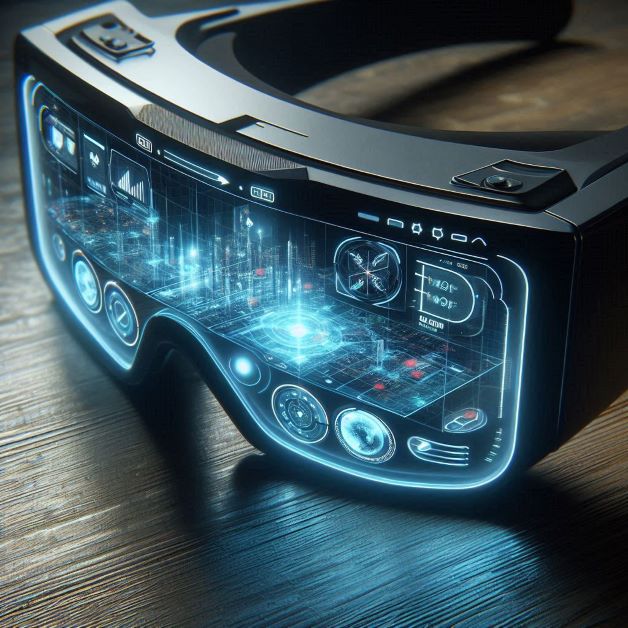The smart glasses industry is rapidly evolving, marked by groundbreaking advancements and innovative applications. These wearable devices combine technology with everyday use, providing users with enhanced experiences across various sectors, including healthcare, manufacturing, education, and entertainment. This article explores the key features of smart glasses, their diverse applications, and future prospects within the smart glasses industry.
The global smart glasses Industry is projected to reach USD 4,129.3 million by 2030 from USD 878.8 million in 2024; it is expected to grow at a CAGR of 29.4%. Key factors propelling the market growth include the rapid technological advancements, increased demand for AR smart glasses, and growing adoption in the industrial sector. Moreover, developments in 5G technologies, and consumer market expansion are expected to create significant opportunities for the smart glasses market. Regulatory constraints, safety concerns and continuously changing consumer preferences are expected to be restraining factors for the smart glasses market.
AR and VR Integration in Smart Glasses Industry
A standout feature of the smart glasses industry is the integration of augmented reality (AR) and virtual reality (VR) technologies.
Augmented Reality (AR): Smart glasses equipped with AR capabilities overlay digital information onto the real world. This functionality allows users to view navigation directions, receive real-time data, and see contextual information related to their environment.
Virtual Reality (VR): Many smart glasses provide immersive VR experiences, ideal for gaming and training applications. Users can engage with virtual environments, enhancing their interaction and learning.
Display Technologies in Smart Glasses Industry
Display technology is crucial in shaping the smart glasses industry.
High-Resolution Displays: The industry increasingly utilizes OLED and microLED technology, providing vibrant colors and sharp images. These enhancements improve visibility in various lighting conditions, ensuring clear views of digital overlays.
Waveguide Technology: This innovative method projects images directly into the user’s line of sight using thin, transparent materials, allowing for lightweight designs while maintaining high-quality visuals.
Battery Life and Power Management
Battery performance is vital for the usability of devices in the smart glasses industry.
Energy-Efficient Components: Many smart glasses feature energy-efficient displays and processors, leading to longer usage times.
Smart Power Management: Advanced power management systems monitor usage patterns, optimizing battery consumption to ensure users can depend on their devices throughout the day.
Download PDF Brochure @
https://www.marketsandmarkets.com/pdfdownloadNew.asp?id=148134046

Connectivity and Network Interfaces
Connectivity features are essential for the smart glasses industry, enabling communication with other devices.
Wireless Connectivity: Most smart glasses support Bluetooth and Wi-Fi, facilitating seamless integration with smartphones and other devices. This connectivity enables notifications, calls, and data synchronization.
5G Compatibility: As 5G technology expands, many smart glasses are being designed to support faster data transfer rates, enhancing real-time applications and streaming capabilities.
Audio and Voice Control Features
Audio integration enhances the functionality of devices in the smart glasses industry.
Built-in Speakers and Microphones: Many models feature high-quality audio components, enabling hands-free communication, voice commands, and audio feedback for a more interactive experience.
Voice Recognition Technology: Voice control allows users to navigate their smart glasses using natural language commands, making interactions intuitive and user-friendly.
Smart Glasses in Healthcare
The smart glasses industry is making significant strides in healthcare applications.
Surgical Assistance: Surgeons can use smart glasses to access real-time patient data and imaging during procedures, improving precision and outcomes.
Remote Consultations: Healthcare professionals can conduct remote consultations, allowing specialists to assist in real time without being physically present.
Smart Glasses in Industrial Applications
Smart glasses are revolutionizing industrial sectors.
Hands-Free Access to Information: Workers can view schematics, maintenance instructions, and safety protocols directly in their line of sight, increasing efficiency and safety.
Training and Safety: Smart glasses provide immersive training experiences, allowing employees to practice tasks in a safe environment before performing them in real life.
Smart Glasses in Retail and Marketing
The retail sector is leveraging the smart glasses industry for innovative marketing strategies.
Enhanced Customer Experience: Retailers can use smart glasses to offer interactive product information, virtual try-ons, and personalized recommendations, improving customer engagement.
Augmented Shopping Experiences: Smart glasses enhance shopping by overlaying additional product information, promotions, and discounts in real-time.
Smart Glasses for Personal Use and Entertainment
The smart glasses industry is also gaining traction among consumers for personal use.
Gaming and Entertainment: Many gaming companies are developing AR and VR smart glasses experiences for smart glasses, providing immersive gameplay that blends digital and physical worlds.
Social Media Integration: Users can capture photos and videos from their perspective, sharing experiences on social media instantly.
Future Prospects of Smart Glasses Applications
The future of the smart glasses industry holds immense potential, with several trends likely to shape its development:
Increased Adoption Across Industries: As technology becomes more affordable and accessible, we can expect broader adoption in logistics, tourism, and education.
Improved User Interfaces: Future iterations will likely incorporate advanced AI-driven interfaces that learn from user behavior, providing personalized experiences.
Integration with IoT: Smart glasses will increasingly connect with Internet of Things (IoT) devices, enhancing functionality in smart homes and workplaces.
The smart glasses industry is at the forefront of technological innovation, boasting features such as AR/VR integration, advanced display technologies, efficient power management, and seamless connectivity. With diverse applications in healthcare, industrial settings, retail, and personal entertainment, smart glasses are poised to reshape how we interact with the world around us. As technology continues to evolve, the smart glasses industry is set for exciting developments, promising to transform our daily experiences in remarkable ways.
